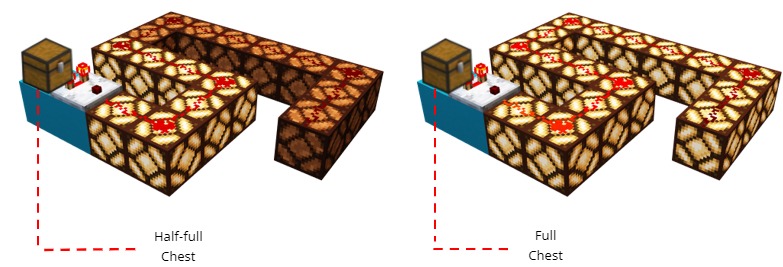Teach: Part 2—Redstone manipulation

Minecraft allows us to manipulate Redstone signal flows. As we explore this concept think of it as wiring in your home and/or the same way circuitry works in a computer to execute functions. Many diagrams in the unit are only designed to explain how the manipulation tools work. Applying their functionality is relative to the context of your build.
Redstone dust lies flat on the ground and is initially dark red. When activated, it glows a bright red and emits particles. Redstone dust will behave with any adjective block, curve sideways, fork in multiple directions, loop, grid, and be linked across levels.
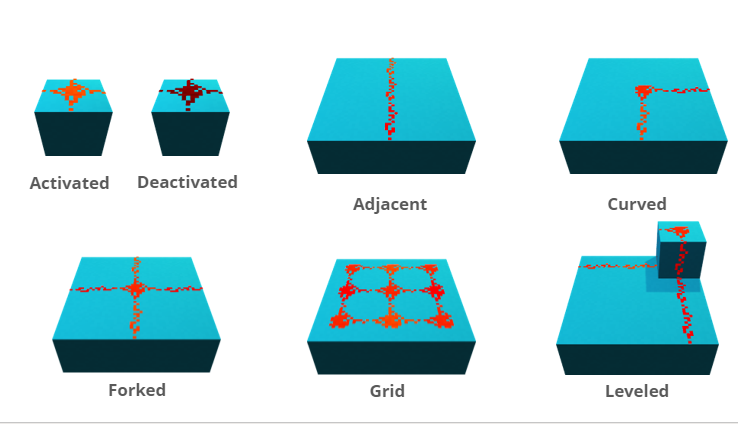
When powered, the Redstone signal will travel a maximum of 15 blocks unless it’s powered again along the way.
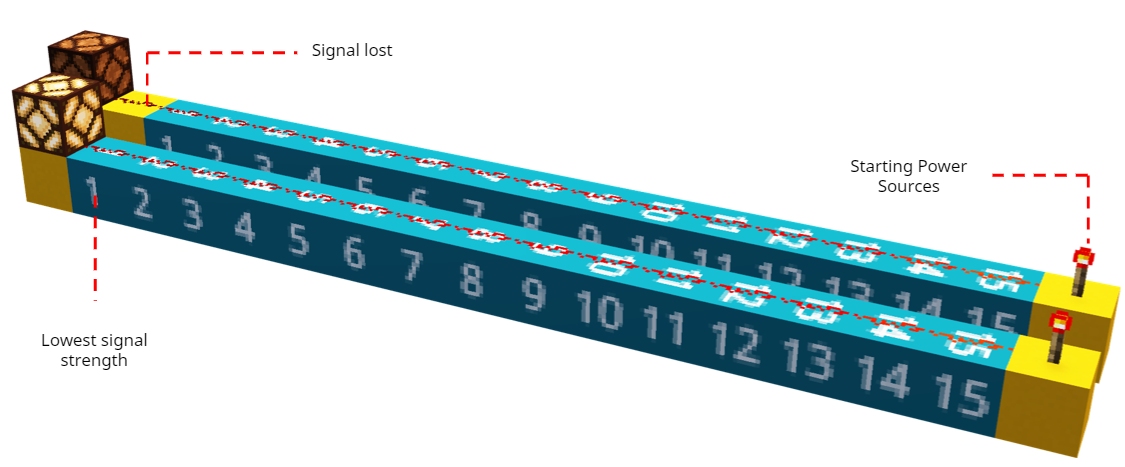
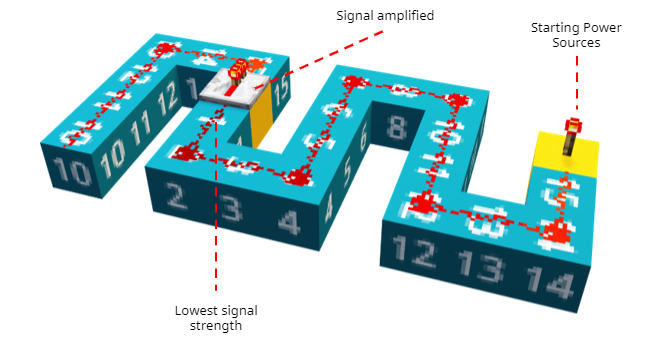
We know ways to power a circuit and provide it with a signal, but that’s just the beginning of what Redstone can do. These next blocks manipulate signal strength and flow, set the speed at which it travels, and even influence non-Redstone elements.
Redstone repeaters
Repeaters amplify Redstone signals back to full strength. Placing a repeater on the fifteenth block of a circuit when the Redstone signal is down to its lowest signal will amplify the signal back to its maximum strength.
Repeaters can combine with other repeaters to create locks in circuits. The same lever powers both lamps in this example. When the lever on the left powers the opposite-facing side of the next repeater, it locks one repeater and blocks the signal from reaching the Redstone lamp.

Repeaters can delay signals by 1 to 4 ticks, depending on the chosen setting. Ticks are primarily used to slow down the rate at which the signal reaches its output. Minecraft's game loop normally runs at a fixed rate of 20 ticks per second, so one tick happens every 0.5 second.

When the lever is pulled in this example, the lamp on the right lights up first. The circuit leading to the lamp on the left has a repeater set to 4 ticks, delaying the signal, and creating a staggered activation.
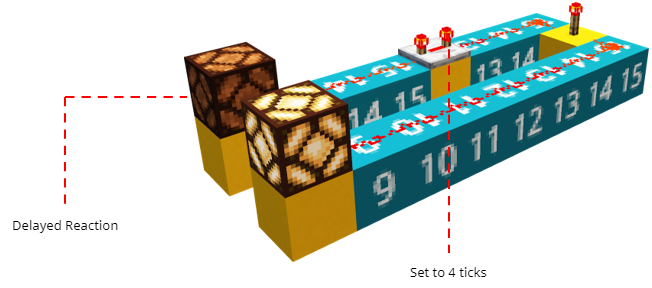
Redstone comparator
A Redstone comparator is a component that compares up to three Redstone signals and outputs a signal accordingly. It has three Redstone torches on top of the block and an arrow facing the output. The single torch indicates if the comparator is in comparison or subtraction mode.

A comparator sustains a signal flowing into it and outputs a signal of the same strength. In this example, the comparator and the repeater are in the same position in parallel circuit strands. The comparator doesn't increase the signal, which limits the signal’s reach, so the Redstone lamp on its strand is off. This example is designed to explain the difference between the repeater and comparators. Applying this design in-game would be highly unlikely.
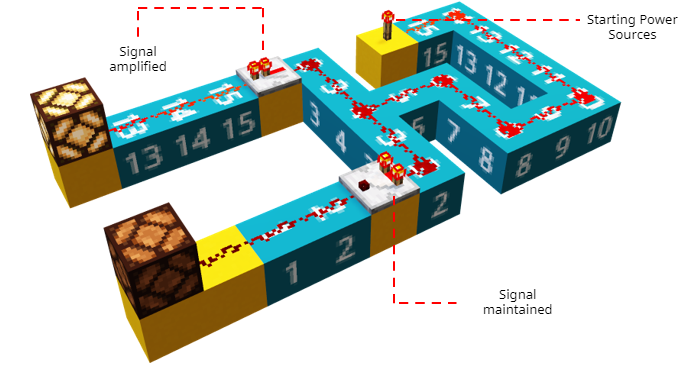
If the signal entering the side of the comparator is weaker than the one entering the rear, then the signal is maintained and output through the front. If the side input is stronger when compared, there will be no output. It can compare up to two inputs, one entering each side of the comparator.
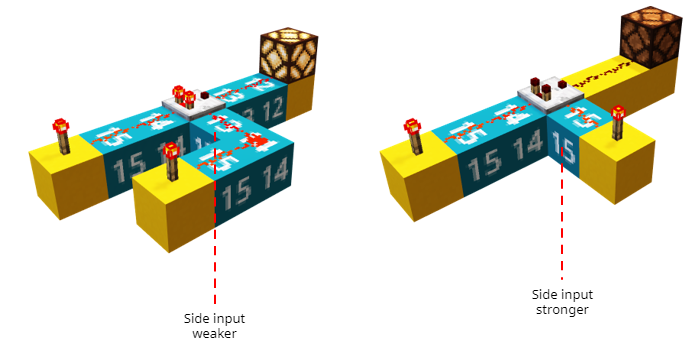
When switched to subtraction mode, the strength of the side signal is subtracted from the rear signal, and a reduced Redstone signal is output, which leaves the Redstone lamp in this example off. It can subtract up to two inputs, one from each side of the comparator.
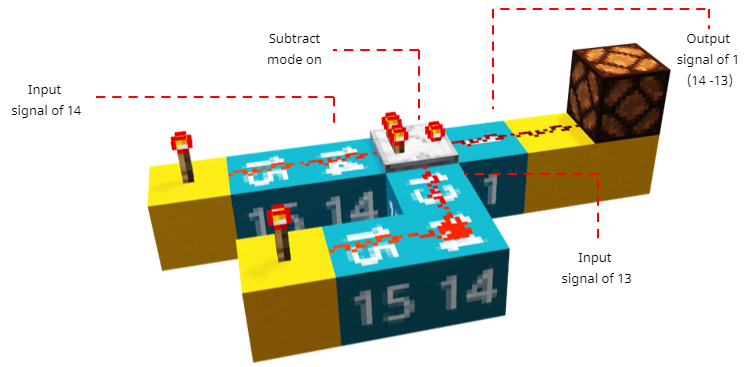
Comparators in these circuits measure how much is in each chest. When full of stacks of 64 items, comparators output a maximum strength signal; when empty, they won’t output a signal.
